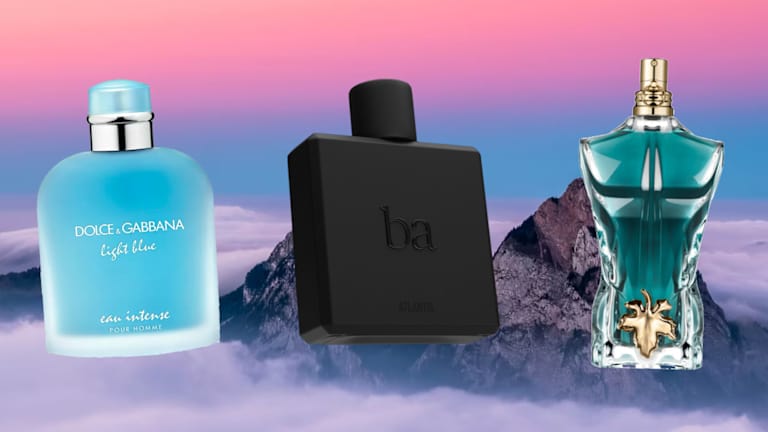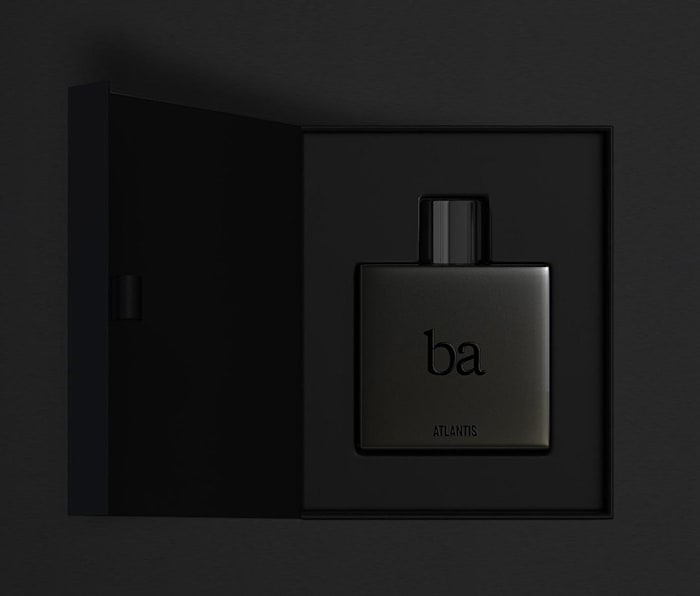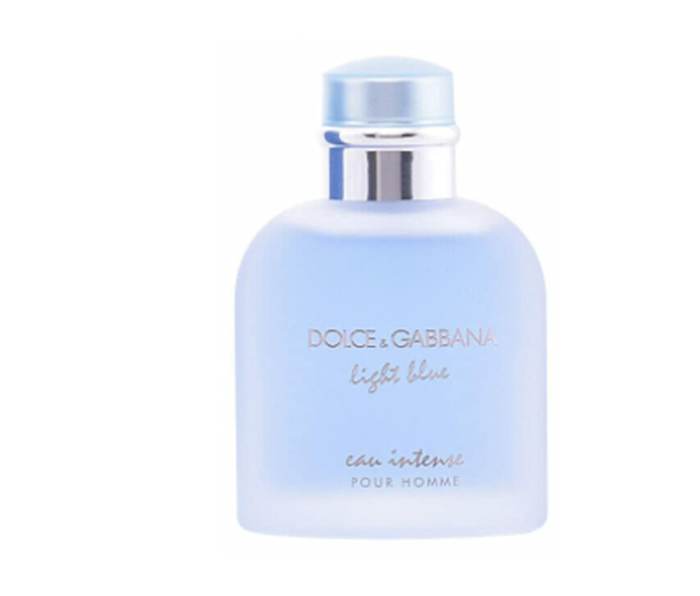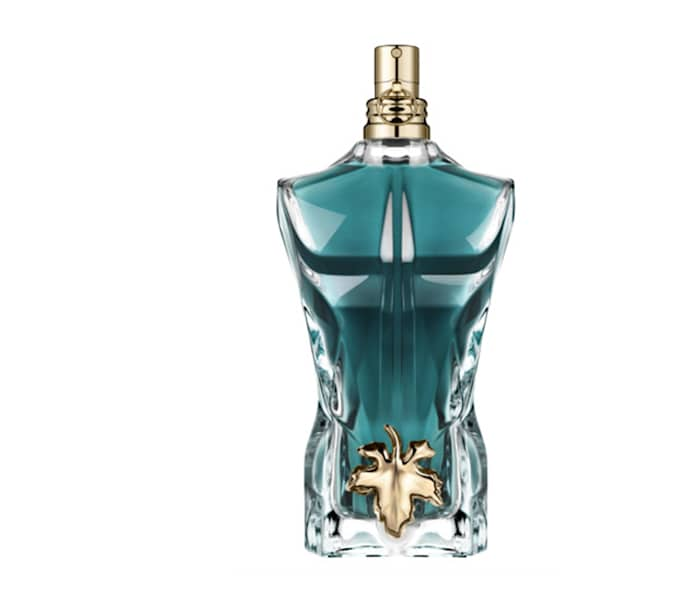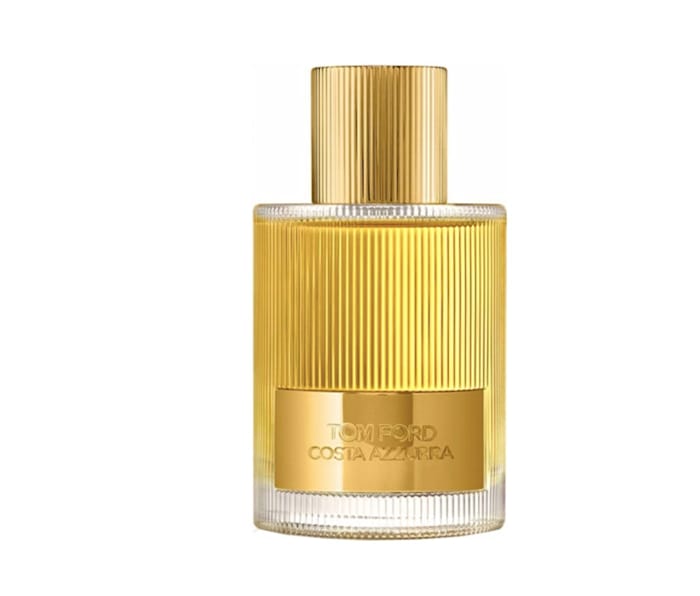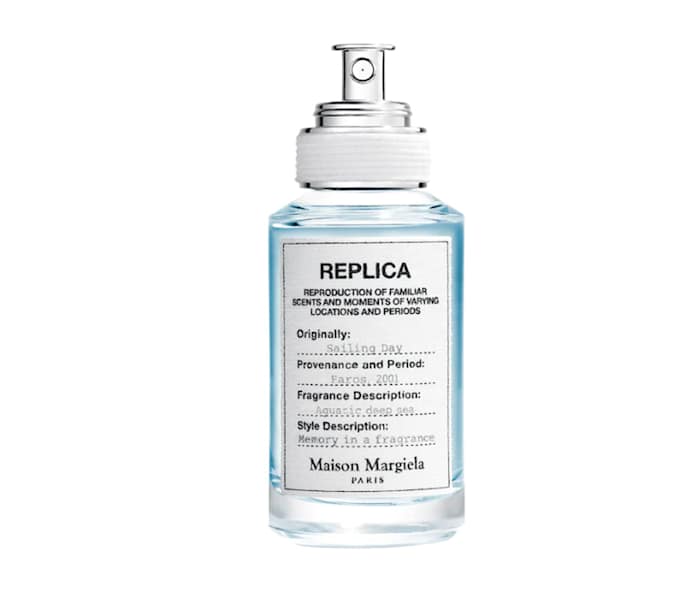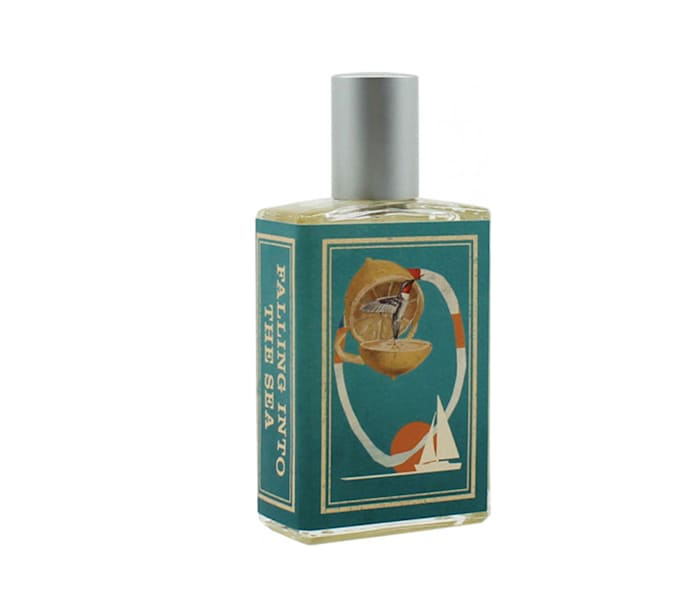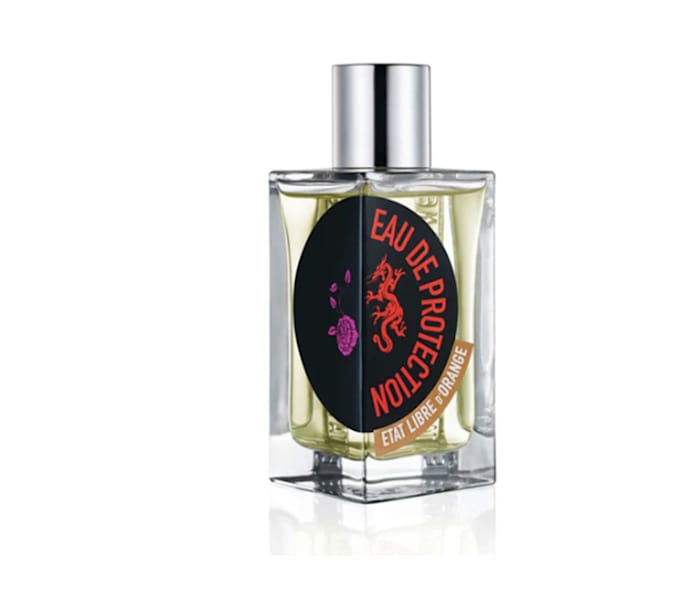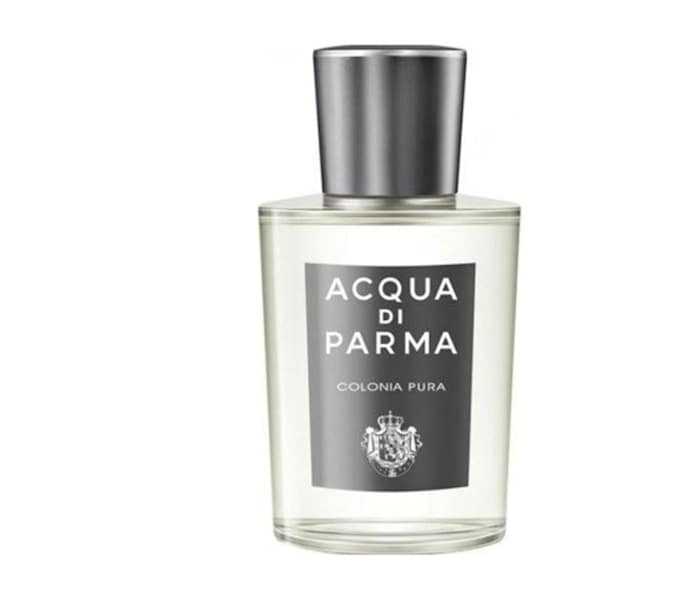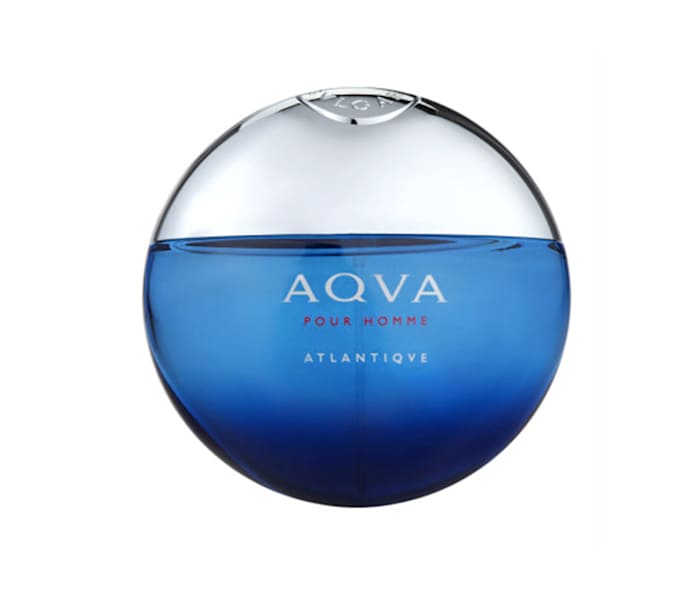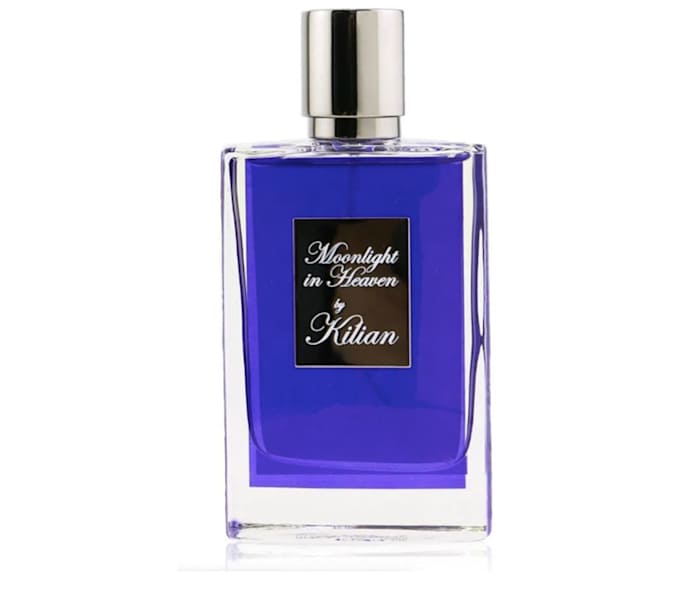Sports Illustrated aims to feature only the best products and services. If you buy something via one of our links, we may earn a commission.
Summer is the season of beach trips, poolside lounging, and maybe even boating. And if you’re a fragrance enthusiast, choosing the right cologne to complement your summer adventures is a must. Not sure where to start? Check out our list of the best summer colognes for 2024.
1. Atlantis by Blu Atlas
Looking for a new scent that not many people have? If so, Atlantis by Blu Atlas is the perfect choice. This cologne is inspired by the jungles of Bali, and it’s sure to transport you to exotic places (even if you just spritz it on before heading to the office!).
Atlantis has a beautiful, citrusy opening that’s fitting for a summer day. Then, as the top notes fade away, you’ll be treated to a unique blend of fruits and herbs. And the dry-down offers the perfect blend of sweetness and musk.
We like that Atlantis is formulated with industry clean standards. That means it contains no phthalates, parabens, preservatives, or synthetic dyes. It’s also vegan and cruelty-free!
Top: lemon, blackcurrant, bergamot
Middle: lavender, peach, apricot, clary sage
Base: oakmoss, violet, ambrette seed, orris, musk
2. Light Blue Eau Intense by Dolce & Gabbana
Everyone loves a classic. And when it comes to colognes for the warmer months, Light Blue is about as classic as they come. The original fragrance was launched in 2007. Eau Intense, a stronger version, came out in 2017. This scent is a great choice if you love the aquatic, citrusy vibes of Light Blue but wish they lasted a little longer.
What’s so special about this lasting favorite? It’s classified as a “woody aquatic” fragrance, so it balances out the lighter, water-inspired notes with a hint of warmth. And even though it opens with citrus notes, it doesn’t hit you with a blast of overly sweet, fruity notes like some colognes do. It’s a fragrance you have to wear to truly appreciate!
Top: frozen grapefruit, mandarin orange
Middle: sea water, juniper
Base: amberwood, musk
3. Le Beau by Jean Paul Gaultier
Jean Paul Gaultier describes this fragrance as a “fresh elixir for an ultra-seductive and sexy man.” The chiseled physique of the bottle is fitting! Le Beau smells unique and balanced, which is somewhat surprising given the fact that it only has three main notes. Like many summer fragrances, it opens with sweet yet slightly bitter bergamot.
Its heart note of coconut wood is fairly uncommon — there’s a hint of coconut, but it’s far more subtle and far less sweet. It’s just woody enough to add some masculine sensuality to the fragrance. The base note of the tonka bean adds warmth and complexity. Tonka bean has a scent with hints of tobacco, vanilla, woods, almond, and gourmand (edible notes like candy or chocolate). Some people even detect a little gingerbread or pistachio!
Top: bergamot
Middle: coconut wood
Base: tonka bean
4. Costa Azzurra by Tom Ford
Tom Ford fragrances are a favorite among fragrance connoisseurs. The brand seems to have a unique fragrance for every situation! This one is ideal if you’re someone who generally prefers earthy, woody scents. Many of these colognes are too warm or heavy for summer wear, but Costa Azzurra incorporates many “heavy” notes into a formula perfect for the warmer months.
This fragrance has one of the more complex note profiles in the Tom Ford lineup, but it can be summed up as a combination of evergreens, sea air, citrus, and deep woods — the perfect scent for a summer adventure!
Top: driftwood, seaweed, oud, celery seed, cardamom, ambrette seed
Middle: cypress, lemon, yellow mandarin, myrtle, artemisia, lavender
Base: incense, oak, vetiver, olibanum, vanilla
5. Sailing Day by Maison Margiela Replica
Maison Margiela’s best-selling Replica series takes certain memorable moments and captures them as fragrances. This one will take you to the ocean, and with detailed aquatic accords and hints of ocean vegetation, you’ll feel as if you’re actually there!
Getting an “aquatic” scent is easier said than done. But Sailing Day makes use of the Aqual™ molecule, a synthetic compound with a distinctly fresh scent. Calone, another unusual molecule, gives this fragrance its unique “sea breeze” note, adding hints of citrus as it does so. When combined with the scent of marine plants and a bit of floral essence, these notes create the perfect cologne for a summer day.
Top: aquatic accord (calone, aldehydes, Aqual™ molecule), juniper essence
Middle: coriander, iris absolute, rose superessence
Base: red seaweed, ambergris, ambery wood
6. Falling Into the Sea by Imaginary Authors
Imaginary Authors is a brand whose unique fragrances center around the “concept of scent as art and art as provocation.” Each scent is based on a book or story by an imagined author. This one’s story is set in the summer in the Gulf of Naples.
Falling Into the Sea appropriately evokes the hot beaches and citrus trees of coastal Italy. Fresh citrus and sweet lychee will refresh you on a hot summer day, and the distinctive “warm sand” note will make you feel like you’re on a beach no matter where you are!
Top: lemon, bergamot, grapefruit
Middle: lychee, tropical flowers
Base: warm sand
7. Eau De Protection by Etat Libre D’Orange
Designer fragrances are great, but if you want to discover something off the beaten path, it’s worth checking out niche perfumers. Etat Libre D’Orange has been making distinctive, often subversive fragrances since 2006, frequently collaborating with prominent figures to do so.
This one, Eau de Protection, was made in collaboration with Spanish actress and model Rossy de Palma. While its many floral notes might make you think it’s a fragrance for women, its rich and earthy base notes and citrusy, peppery opening make it perfectly androgynous. So if your ideal summer cologne is more floral than citrusy, this is a great choice!
Top: bitter orange, ginger, black pepper
Middle: jasmine, heliotrope, Turkish rose
Base: benzoin, patchouli, tonka bean
8. Colonia Pura by Acqua Di Parma
Colonia Pura is considered to be a floral woody musk fragrance, but that descriptor doesn’t capture how wonderfully fresh its opening is! Like many of the best summer colognes, this one has citrusy top notes. It also includes ozonic notes — these notes are the ones that make you feel like you’re smelling fresh seaside air.
Beneath Colonia Pura’s wonderfully crisp opening is a bouquet of floral notes. But thanks to the smokiness of jasmine sambac, these floral notes never become overly sweet. They sit atop an earthy, sensual base that keeps everything grounded.
Top: bergamot, orange, petitgrain, ozonic notes
Middle: jasmine sambac, narcissus, coriander
Base: cedar, patchouli, white musk
9. Aqva Pour Homme Atlantiqve by Bvlgari
If you’re the kind of person who wants a cologne that evokes the depths of the sea, this one from Bvlgari is perfect. It was developed by perfumer Jacques Cavallier and inspired by the power of the Atlantic Ocean.
Cavallier developed a “sea amber” note for the heart of this fragrance. Sea notes are typically light, airy, and ozonic. Amber notes are heavier and deeper, so the combination of the two is meant to give you a sense of the ocean’s vast depths.
Despite its seaside vibes, Aqva Pour Homme Atlantiqve has a warm and earthy base. Even though notes like amberwood and benzoin are typically found in colder-weather fragrances, they seem to work well here.
Top: Calabrian bergamot, Sicilian lemon, sage, water notes
Middle: ambergris, apple, sea notes
Base: amberwood, benzoin, patchouli, vetiver, sandalwood.
10. Moonlight in Heaven by Kilian
This fresh, light fragrance with tropical appeal is perfect for summer nights. It manages to be fresh, creamy, and powdery all at once, but it never seems chaotic or disjointed.
Although it includes plenty of citrus, Moonlight in Heaven’s middle notes of rice, coconut, and mango set it apart. So does the meticulous attention to detail — the blue lacquered bottle features a silver, hand-engraved plate and an engraved silver cap to match.
Like other Kilian perfumes, this one is a little pricey. But it comes with a perk that few perfumers offer: the bottle is infinitely refillable. Once you buy it, you have it for life!
Top: grapefruit, lemon, pink pepper
Middle: mango, rice, coconut
Base: tonka bean, vetiver
FAQs: Finding Your Summer Cologne
What Makes Something a “Summer” Fragrance?
On a hot summer day, would you rather sit down to coffee and chocolate cake or lemonade and a fruit tart? Most people choose the lighter option, and fragrances work the same way. When it’s hot and humid outside, “heavier” scents like tobacco and leather can feel like too much.
The summer heat makes fragrances evaporate faster than they would in the colder months, and perfumers take that into account. As a result, “winter” fragrances aren’t designed to withstand a lot of heat. In the summer, they can evaporate quickly, creating an overpowering scent all at once.
In many cases, fragrances aren’t advertised as “summer” or “winter” fragrances. Instead, you can read through the notes and decide what season they’re most suitable for. Here are some notes you’ll often find in summer fragrances:
- Bergamot
- Lemon
- Grapefruit
- Lime
- Other fruit notes
- Sea water
- Saffron
- Lavender
- Rose
- Gardenia
- Coriander
- Cardamom
This is just a small selection of possible notes. Many summer fragrances include sweet, light notes, but they will often include slightly heavier base notes. Cypress, vetiver, and sandalwood are common choices, as they aren’t as heavy as many woody notes.
What Do All These Different Notes Smell Like?
Even a fragrance newbie knows what grapefruit, lemon, and seawater smell like. But some of the notes in the best summer colognes are a little less obvious. Here are some of the other notes you’re likely to find (and what they smell like):
Petitgrain might sound like a type of grain, but it’s an oil distilled from the stems and leaves of the bitter orange tree. “Petitgrain” is French for “little grains” — it’s a reference to the very small fruits of the bitter orange tree.
Ozonic notes are synthetic notes designed to smell like fresh air, especially sea air or the air after rain. There’s a wide range of different ozonic notes, and some of them even have hints of mint or citrus. Notably, even though some ozonic notes are inspired by sea air, they don’t generally have salty undertones.
Tonka bean is a note that has gained significant popularity in recent years. It’s a legume from South America that has a sweet aroma like that of vanilla. However, the scent is incredibly nuanced and includes notes of tobacco and spice. Thanks to its depth and complexity, tonka bean is mostly used as a base note.
Vetiver is a very fragrant grass found in Southeast Asia and India. It smells a bit like newly-cut grass, but its aroma is decidedly warmer, woodier, and earthier. There are a few varieties of vetiver. Some smell more floral, some are citrusy, and some are smoky.
Lychee is a small fruit found in Southeast Asia. It has a sweet, tropical aroma with aquatic notes. Lychee seems to smell different to different people. Some people say it smells like roses. Others say its aroma is closer to that of pear or watermelon.
Orris is an ingredient that comes from the root of the iris flower. It’s delicate, floral, and powdery. It’s also expensive. That’s because the roots have virtually no scent when they are first harvested — they need to be aged for 3-4 years before they can be distilled.
Olibanum is a tree resin from trees of the Boswellia genus. In the West, it is often called frankincense. Its scent is hard to describe. Like many tree resins, it smells a bit woody and balsamic. However, it’s also a bit citrusy, sweet, and spicy.
Benzoin is another tree resin. It comes from trees in the Styrax genus, so you may see it listed as “styrax.” It has a rich, sweet scent, much like that of vanilla. Thanks to its warmth, benzoin is often found in cool-weather fragrances, but it’s sometimes used in summer fragrances, too.
Jasmine sambac is a variety of the jasmine plant. Usually, when you see “jasmine” listed as a note, it refers to Jasmine grandiflorum. Jasmine grandiflorum has a fresh, floral scent. Jasmine sambac has a scent that’s still floral, but it’s often described as “smoky” or “sultry” as well.
Ambergris might sound like amber, but it’s a material that comes from the digestive system of sperm whales. Once it ages, it has a woody, slightly nutty scent. Ambergris is also a great fixative, meaning it stops more volatile ingredients (like citrus notes) from evaporating as fast. Today, most ambergris notes are synthetic.
Heliotrope is a sweet-smelling flower, though its exact qualities seem to shift depending on what notes are used alongside it. Sometimes it can smell powdery and iris-like. At other times, it smells a bit like almond or even vanilla.
Narcissus is a powerful, springlike floral scent that comes from the flower of the same name. There are many different species of narcissus, so the exact scent depends on the species. In many cases, though, narcissus smells “green” as well as floral. It’s a powerful scent, so perfumers often just use a touch!
Seaweed is often found in aquatic or marine fragrances. While there are many different species, most smell like a mixture of green, woody, marine, and even leathery notes. Many colognes that incorporate seaweed also incorporate salt and ozonic notes to give you the sense of being at the seashore.
Bergamot is an especially elegant citrus note that appears in countless summer colognes. It’s a small citrus fruit that’s also used to flavor Earl Grey tea, and it smells slightly tart and a little spicy.
White musk is a synthetic version of animal musk. Animal musk was traditionally obtained from the musk deer, but it has been outlawed in many areas. White musk has a cleaner, fresher scent than the earthier animal musk, and it’s sometimes even described as “soapy.”
Ambrette seed is considered to be “natural white musk” or “vegetable musk,” as it comes from a plant called the musk mallow.
Cypress comes from the cypress tree. Although it’s a woody note, it frequently appears in aquatic and marine fragrances. It’s dry, balsamic, and even a little spicy. Cypress’s scent tends to linger, so it’s an ideal base note.
Artemisia is a bitter herb that is also used to flavor both absinthe and vermouth. It has a very sharp, “green” scent. That description might not make it sound too appealing, but Artemisia excels when it comes to balancing out soft, sweet florals.
There Are so Many Different Fragrances! How Do I Pick One?
If you’re like many fragrance aficionados, you read through several fragrance descriptions and find that you want them all! For most of us, buying 10 or more colognes at a time isn’t feasible. Here are a few tips for narrowing down your choices:
Know what notes you like (and don’t like). This can be a quick way to narrow the field when picking a fragrance. For instance, if you find the scent of grapefruit irresistible, you might decide to only choose a fragrance with a grapefruit note.
If there’s a note you absolutely hate, you can steer clear of those fragrances. But in some cases, especially with very complex note profiles, you might find that the note you dislike isn’t very present at all. So if you find a fragrance that sounds perfect with the exception of one note, it may be worth getting a sample and seeing if you like it.
Consider concentration. A lot of people go with “light” fragrances in the summer, so eau de toilette (EDT) compositions (8-15% fragrance oil) are popular. They’re present without becoming overbearing, but some people find their longevity to be lacking.
Eau de parfum (EDP) concentrations are a bit stronger, as they’re about 15-30% fragrance oil. Some people find that they become overpowering in the heat. But others prefer a spray or two of an EDP over an EDT. Different fragrances will last longer on some people than others, so you might want to test the longevity of different fragrances before you commit.
Get samples. Even after narrowing down your options, you still might have a few fragrances you can’t decide between. As tempting as it may be to order a full-size bottle, getting a small sample of each is the best way forward — you’ll save yourself a lot of money and regret that way!
Two fragrances with the same notes can have completely different characters. Plus, the way a fragrance reacts with your skin oils determines how it will smell on you. Certain fragrances can smell great on one person and not so great on the next.
You may be able to find manufacturer-issued samples online. If you can’t, you might look for a company that sells decants. These are hand-poured samples from full-sized bottles. With these, you can try wearing and living with the fragrance for a few days to see if you like it before committing to the full-size bottle.
What Are “Designer” and “Niche” Fragrances?
If you’ve spent any time reading fragrance reviews or even just searching for your next cologne, you may have seen some fragrances referred to as “designer” and others as “niche.” Designer fragrances are those made by major companies that also design clothes and accessories — Dior, Versace, and Tom Ford are some prominent examples.
Designer fragrances tend to be very accessible and are sold at many major retailers. They also are formulated to appeal to a wide variety of people, so you won’t usually find offbeat or experimental designer fragrances.
On the other hand, niche fragrances are made by brands that only focus on fragrance. Maison Margiela Replica, Etat Libre D’Orange, Byredo, and Juliette Has a Gun are a few examples. They are designed to appeal to smaller audiences, so you may find unusual notes or combinations of notes.
Does Fragrance Ever Expire?
Lots of people like to collect different fragrances. And if your collection includes more than a few full-size bottles, it will probably take you quite some time to use it all. But will it go bad?
The answer is yes, but it’s impossible to know just how long your fragrance will last. Fragrances generally will stay good for 1-10 years.
How long your fragrances last may depend in part on what they’re made of. Lighter, citrusy fragrances (like many summer fragrances) have less molecular stability, so they may start to smell sour over time. Natural fragrances tend to expire more quickly than ones with mostly synthetic ingredients.
However, fragrances with a lot of plant resins and woody notes actually tend to get more stable as they age, and they may even start to smell better! So if you want to choose a summer fragrance and make it last as long as possible, look for one with woody or resinous base notes.
How Can I Tell If My Fragrance Has Gone Bad?
Fragrances can expire at drastically different rates. So to make sure your cologne hasn’t gone bad, it’s a good idea to check it for signs of deterioration regularly. Here are a few things to look for:
Color changes. As fragrances start to break down or become oxidized, their colors may change. In some cases (usually when they turn lighter), that color change just comes from naturally fading pigments. In other cases (usually when they turn darker or cloudier), that color change indicates that a fragrance has expired or is about to.
Crystallization. Sometimes, an expiring fragrance will start to form small crystals around the atomizer. But if it smells fine, it’s still safe to use.
Smelling sour or “off.” This is one of the best ways to tell if your fragrance has expired. After all, some colognes can change color and still smell great. You know what your various fragrances are supposed to smell like. So if something starts to smell bad, trust your nose!
Skin irritation. If your skin is sensitive or you have allergies, some colognes may irritate your skin. But if a normally non-irritating fragrance suddenly starts causing rashes, itching, burning, or other types of irritation, it may be a sign that it’s begun to go bad.
How Do I Make My Fragrance Last Longer?
That 1-10 year freshness window is a long one. And unfortunately, fragrance manufacturers won’t usually give you an expiration date. So here are some tips to make your fragrance last as long as possible:
Don’t store it in the bathroom. Where do you keep your cologne? If you’re like many people, you keep it in the bathroom. But that’s one of the worst places to store a fragrance! Bathrooms have extreme fluctuations in humidity, and those fluctuations can make a fragrance go bad much faster.
Keep it out of the light. Many fragrances come in exquisitely beautiful bottles, so it’s tempting to put them on display! However, light will cause the molecules in a fragrance to break down faster. If you keep your fragrances in a dark place, they’ll probably last longer!
Avoid exposure to oxygen. When cologne is exposed to oxygen, the molecules within it oxidize. When enough oxidation takes place, the fragrance will start to smell (and sometimes look) off.
Shaking the bottle speeds up the process of oxidation. And the more oxygen is in the bottle, the faster the fragrance oxidizes. That means as you use more of your fragrance, the fragrance that remains in the bottle may start to go bad faster.
Keep the fragrance in the original box. Fragrance boxes are designed to preserve the scent within. If you keep your bottles of cologne in the boxes they came in, you’ll find that they last much longer!
